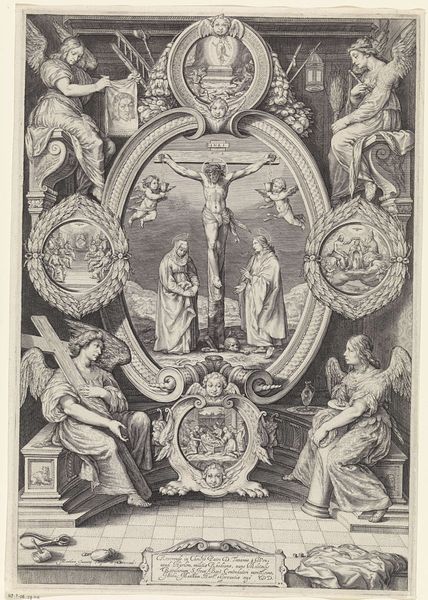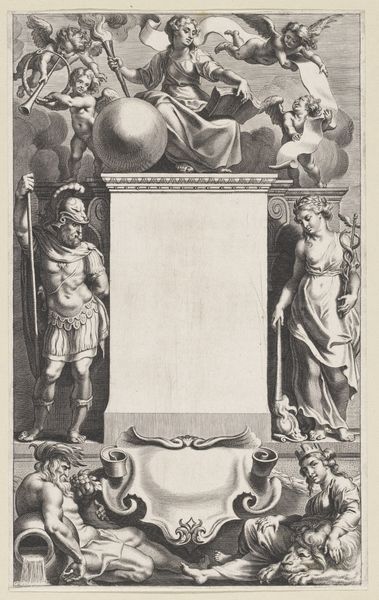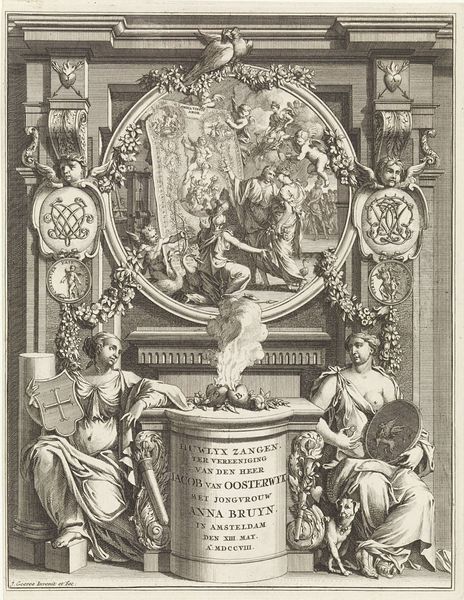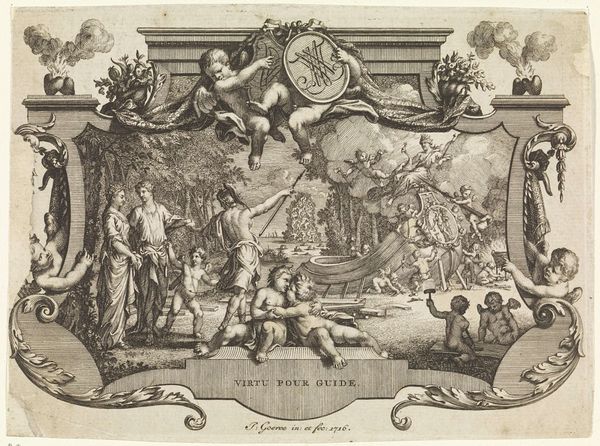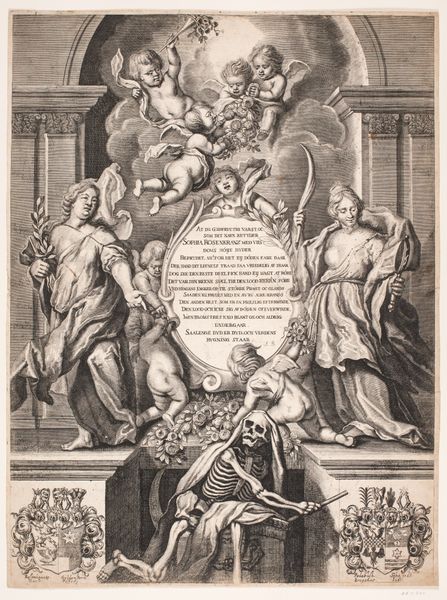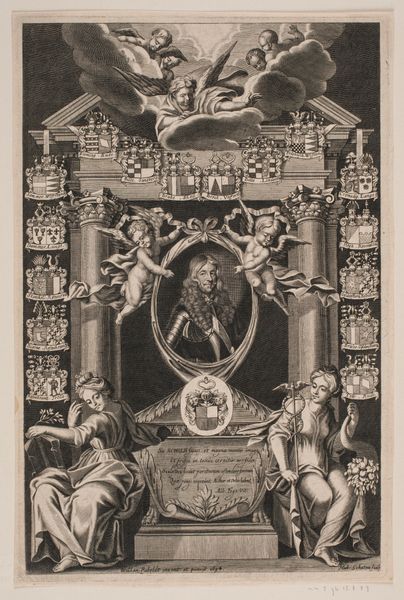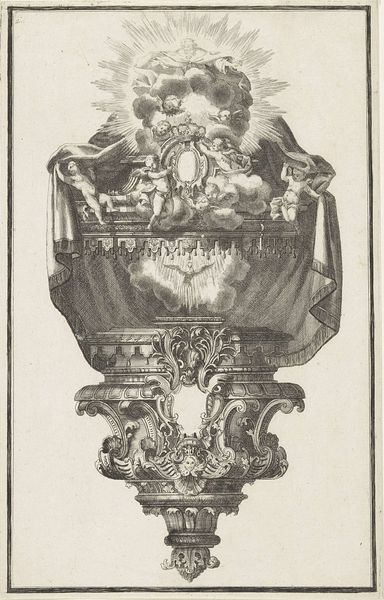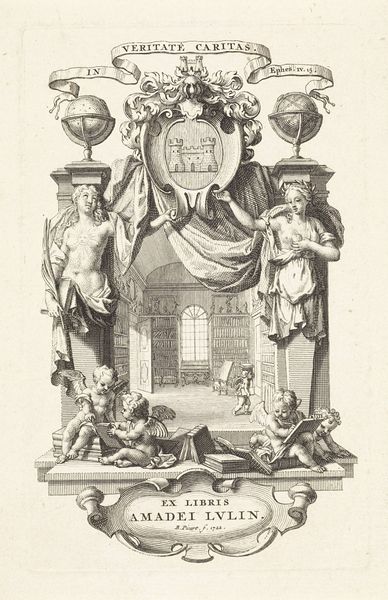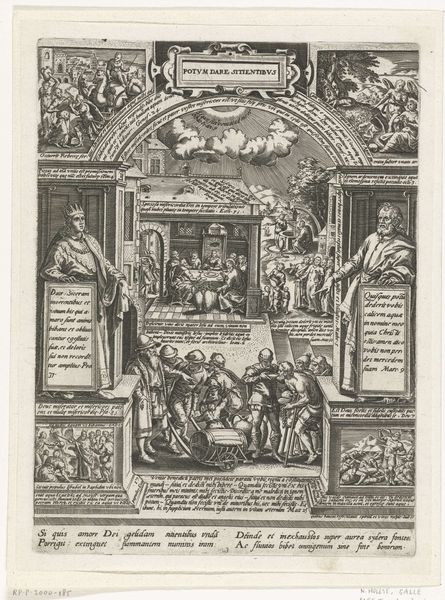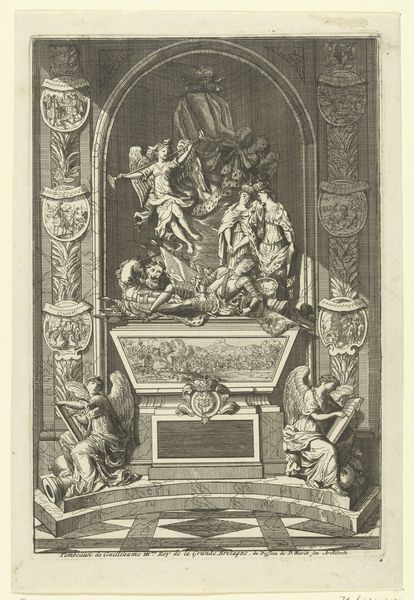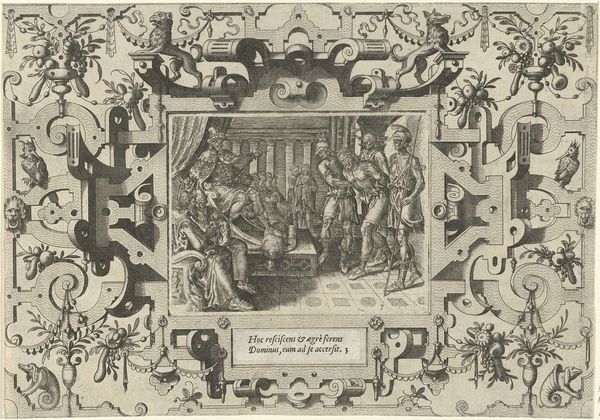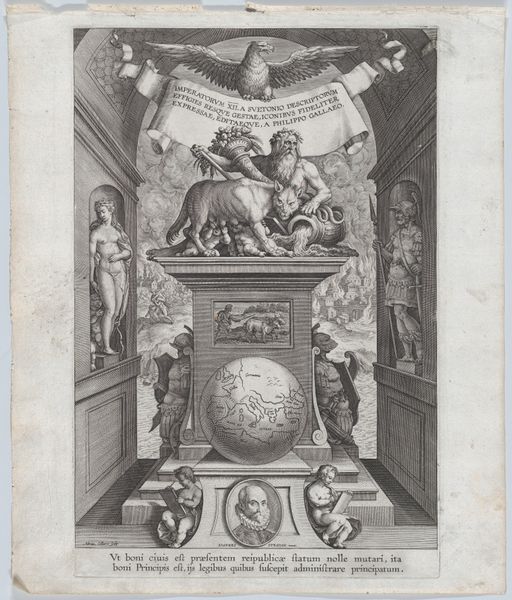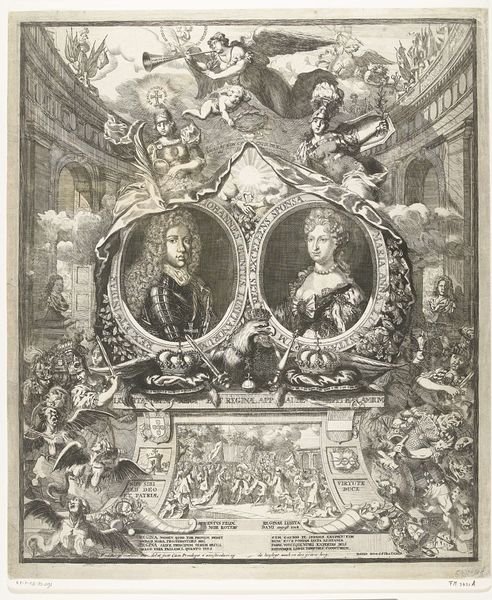
print, engraving
#
portrait
#
allegory
#
baroque
# print
#
figuration
#
group-portraits
#
history-painting
#
engraving
Dimensions: width 423 mm, height 589 mm
Copyright: Rijks Museum: Open Domain
Curator: As you look at this elaborate print, let me introduce Jacob Gole’s "Rechtvaardigheid omringd door de vier continenten," created between 1680 and 1724. You can find it here at the Rijksmuseum. Editor: Oh, it's incredibly ornate! So much detail… it's almost overwhelming, but in a gorgeous, baroque sort of way. Like peering into a dream of global dominion, or maybe a power play. Curator: The work is an engraving, reflecting the Dutch Republic’s extensive global trade during its Golden Age. Note the personification of Justice at the very top, balanced scales and scepter in hand. This embodies an idealized image that was being projected. Editor: Justice looks pretty comfortable up there floating on a cloud, observing all these... others beneath. What a dramatic stage she's set on. The figures representing the continents almost look like trophies or prized possessions. And their intense costumes. Are those real feathers? Curator: Each continental figure is carefully delineated with markers referencing local traditions: America adorned with feathers, Asia bearing riches. Gole positions them reverentially around a central cartouche – originally meant to hold text – but the meaning of such representation is steeped in power dynamics and economic ambition. It reflects not necessarily a factual depiction of these territories but European ideas about those lands and its people. Editor: Right, it is pure projection, isn’t it? A claim, maybe a justification for... well, you know. But technique-wise, look at the light! Gole has managed to carve a bright luminosity. The texture is something else, too – all the little flecks of ink forming those incredibly elaborate garments, the soft clouds... I think that is great work, irrespective of what it meant. Curator: Exactly! Consider too how this print would have functioned; perhaps intended to circulate among merchant elites or government officials, visually legitimizing and naturalizing complex international policies and structures of exploitation of resources. Editor: So, in essence, it's as beautiful as it is politically charged. I find it very poignant to stare at something so gorgeous which carries so many... what would you call it, uncomfortable truths about cultural relationships. I shall ponder this a while longer, thanks. Curator: Me too. It highlights how art and history continually reshape each other. Thank you for joining me to discuss this.
Comments
No comments
Be the first to comment and join the conversation on the ultimate creative platform.
